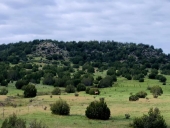
 2
2




Being weird is easy. Making it mainstream is hard. Be brave! https://www.youtube.com/@healthygreenbrave

 2
2




Some places need to be wild
 1
1




Rebekah said "After reading your book, and writing down just what I eventually want to build.
Invasive plants are Earth's way of insisting we notice her medicines. Stephen Herrod Buhner
Everyone learns what works by learning what doesn't work. Stephen Herrod Buhner
 7
7










 1
1




Being weird is easy. Making it mainstream is hard. Be brave! https://www.youtube.com/@healthygreenbrave






 1
1




Being weird is easy. Making it mainstream is hard. Be brave! https://www.youtube.com/@healthygreenbrave






 1
1




Being weird is easy. Making it mainstream is hard. Be brave! https://www.youtube.com/@healthygreenbrave










 3
3




Some places need to be wild










Being weird is easy. Making it mainstream is hard. Be brave! https://www.youtube.com/@healthygreenbrave
 4
4




A build too cool to miss:Mike's GreenhouseA great example:Joseph's Garden
All the soil info you'll ever need:
Redhawk's excellent soil-building series















 1
1




Some places need to be wild
 6
6




Iterations are fine, we don't have to be perfect
My 2nd Location:Florida HardinessZone:10 AHS:10 GDD:8500 Rainfall:2in/mth winter, 8in/mth summer, Soil:Sand pH8 Flat










Being weird is easy. Making it mainstream is hard. Be brave! https://www.youtube.com/@healthygreenbrave










 1
1




Some places need to be wild










 1
1




Some places need to be wild

|
Joel Salatin has signs on his property that say "Trespassers will be Impressed!" Impressive tiny ad:
Learn Permaculture through a little hard work
https://wheaton-labs.com/bootcamp
|





